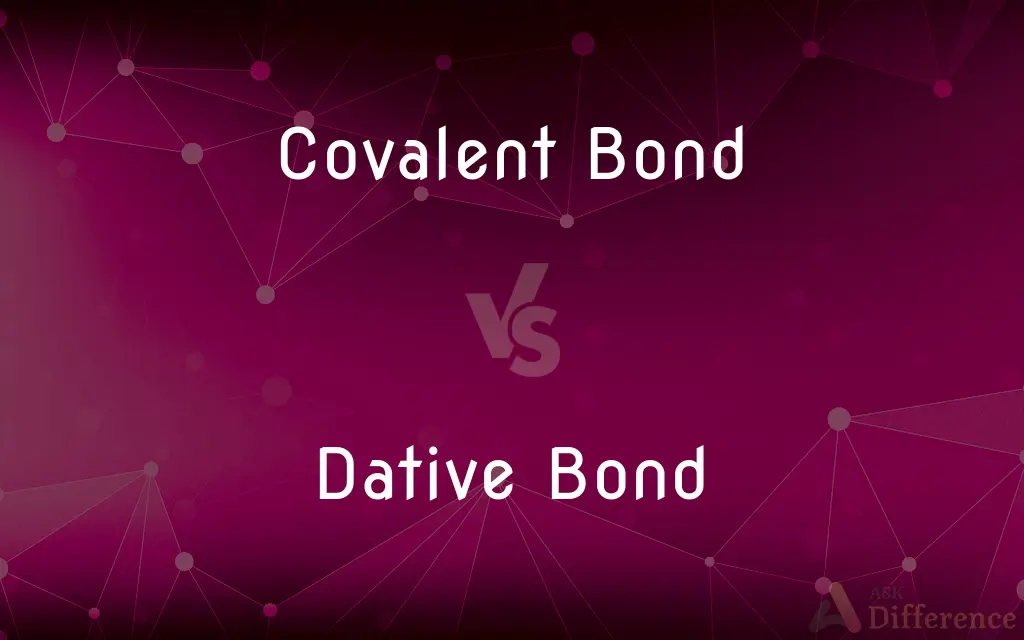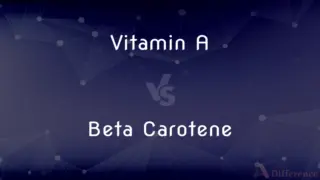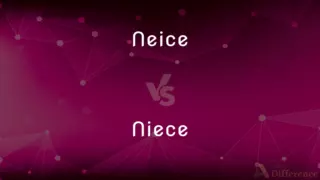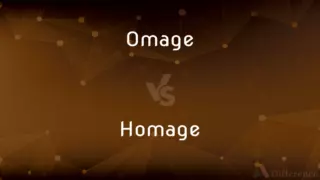Covalent Bond vs. Dative Bond — What's the Difference?
By Tayyaba Rehman & Fiza Rafique — Published on October 20, 2023
A Covalent Bond forms when atoms share electrons equally, while a Dative Bond forms when one atom donates both shared electrons.

Difference Between Covalent Bond and Dative Bond
Table of Contents
ADVERTISEMENT
Key Differences
In a Covalent Bond, the electrons are usually shared equally or nearly equally between two atoms, making their bond stable. In contrast, in a Dative Bond, since one atom donates both shared electrons, the bond arises due to the desire of one atom to donate an electron pair and another atom to accept it.
Tayyaba Rehman
Oct 20, 2023
The key distinction between the Covalent Bond and the Dative Bond lies in the origin of the electrons being shared. For a standard covalent bond, each atom contributes one electron. For a dative bond, one atom is the sole provider of the two shared electrons.
Tayyaba Rehman
Oct 20, 2023
While every Dative Bond can be described as a covalent bond, not every Covalent Bond can be described as dative. This is because dative bonding is a specific scenario of electron sharing, while covalent bonding is a broader category.
Tayyaba Rehman
Oct 20, 2023
Molecules that contain Covalent Bonds can have atoms with similar or different electronegativities. However, in molecules with a Dative Bond, the bond is often between a Lewis base (electron pair donor) and a Lewis acid (electron pair acceptor).
Tayyaba Rehman
Oct 20, 2023
A Covalent Bond is a type of chemical bond where atoms come together by sharing electrons, allowing them to fill their outermost shell. A Dative Bond, also known as a coordinate bond, is a specialized type of covalent bond where one atom provides both the electrons for sharing.
Tayyaba Rehman
Oct 20, 2023
ADVERTISEMENT
Comparison Chart
Origin of Electrons
Both atoms contribute electrons
One atom donates both electrons
Tayyaba Rehman
Oct 20, 2023
Type of Bond
Broad category of electron sharing
Specialized type of covalent bond
Tayyaba Rehman
Oct 20, 2023
Relationship to Electronegativity
Can be equal or different
Often involves a Lewis acid and base
Tayyaba Rehman
Oct 20, 2023
Electron Contribution
Usually equal from both atoms
Unequal; one atom donates both
Tayyaba Rehman
Oct 20, 2023
ADVERTISEMENT
Definitions
Covalent Bond
A bond formed by sharing electrons.
Water has a Covalent Bond between its hydrogen and oxygen atoms.
Tayyaba Rehman
Oct 04, 2023
Dative Bond
Special type of covalent bond.
Ammonium ion formation involves a Dative Bond between ammonia and a proton.
Tayyaba Rehman
Oct 04, 2023
Covalent Bond
Helps atoms complete their electron shells.
Atoms form Covalent Bonds to achieve a full outer shell.
Tayyaba Rehman
Oct 04, 2023
Dative Bond
Also known as a coordinate bond.
Carbon monoxide contains a Dative Bond from carbon to oxygen.
Tayyaba Rehman
Oct 04, 2023
Covalent Bond
Exists in molecules with similar electronegativities.
The Covalent Bond in oxygen gas involves two oxygen atoms.
Tayyaba Rehman
Oct 04, 2023
Dative Bond
Formed between a Lewis acid and a Lewis base.
In the formation of hydronium ion, the bond between H₂O and H⁺ is a Dative Bond.
Tayyaba Rehman
Oct 04, 2023
Covalent Bond
Results from mutual electron sharing.
The Covalent Bond in methane ensures stability.
Tayyaba Rehman
Oct 04, 2023
Dative Bond
Results from a lone pair's donation.
In sulfur hexafluoride, sulfur forms a Dative Bond with each fluorine atom.
Tayyaba Rehman
Oct 04, 2023
Covalent Bond
Strong and often forms stable molecules.
Diamonds have strong Covalent Bonds between carbon atoms.
Tayyaba Rehman
Oct 04, 2023
Dative Bond
A bond where one atom donates both electrons.
In the compound NH₃BF₃, the bond between nitrogen and boron is a Dative Bond.
Tayyaba Rehman
Oct 04, 2023
FAQs
How do atoms in a Covalent Bond share electrons?
In a Covalent Bond, electrons are usually shared equally or nearly equally between two atoms.
Tayyaba Rehman
Oct 20, 2023
What is a Covalent Bond?
A Covalent Bond is a chemical bond where atoms share electrons to fill their outermost shell.
Tayyaba Rehman
Oct 20, 2023
What is a Dative Bond?
A Dative Bond, also known as a coordinate bond, forms when one atom donates both electrons for sharing with another atom.
Tayyaba Rehman
Oct 20, 2023
Why is a Dative Bond unique?
It's unique because one atom provides both electrons for the bond.
Tayyaba Rehman
Oct 20, 2023
Are Covalent Bonds strong?
Yes, Covalent Bonds are generally strong and form stable molecules.
Tayyaba Rehman
Oct 20, 2023
Can a molecule have both Covalent and Dative Bonds?
Yes, a molecule can have a combination of standard covalent bonds and dative bonds.
Tayyaba Rehman
Oct 20, 2023
Are all Dative Bonds also Covalent Bonds?
Yes, all Dative Bonds are a specialized type of Covalent Bond.
Tayyaba Rehman
Oct 20, 2023
What drives the formation of a Covalent Bond?
The desire of atoms to achieve a full outer electron shell drives Covalent Bond formation.
Tayyaba Rehman
Oct 20, 2023
Can Dative Bonds be found in everyday substances?
Yes, for example, the bond between the oxygen atom in a water molecule and a proton (H⁺) in the formation of a hydronium ion (H₃O⁺).
Tayyaba Rehman
Oct 20, 2023
How is the strength of a Dative Bond compared to a regular Covalent Bond?
The strength can be similar; it's more about the origin of the electrons than the strength of the bond.
Tayyaba Rehman
Oct 20, 2023
What's the significance of electron sharing in Covalent Bonds?
Electron sharing in Covalent Bonds ensures that atoms achieve a more stable electron configuration.
Tayyaba Rehman
Oct 20, 2023
Which atoms typically form Dative Bonds?
Dative Bonds often form between a Lewis base (electron pair donor) and a Lewis acid (electron pair acceptor).
Tayyaba Rehman
Oct 20, 2023
Can a Dative Bond be reversed?
In some cases, yes. The electron pair can be withdrawn by the donor atom.
Tayyaba Rehman
Oct 20, 2023
What's a common example of a Covalent Bond?
The bond between two hydrogen atoms in a hydrogen molecule (H₂) is a common Covalent Bond.
Tayyaba Rehman
Oct 20, 2023
Do both atoms in a Dative Bond have an octet of electrons?
Yes, the Dative Bond ensures both the donor and acceptor atom achieve a stable electron configuration, often an octet.
Tayyaba Rehman
Oct 20, 2023
Author Spotlight

Written by
Tayyaba RehmanTayyaba Rehman is a distinguished writer, currently serving as a primary contributor to askdifference.com. As a researcher in semantics and etymology, Tayyaba's passion for the complexity of languages and their distinctions has found a perfect home on the platform. Tayyaba delves into the intricacies of language, distinguishing between commonly confused words and phrases, thereby providing clarity for readers worldwide.

Co-written by
Fiza RafiqueFiza Rafique is a skilled content editor at AskDifference.com, where she meticulously refines and enhances written pieces. Drawing from her vast editorial expertise, Fiza ensures clarity, accuracy, and precision in every article. Passionate about language, she continually seeks to elevate the quality of content for readers worldwide.

















































